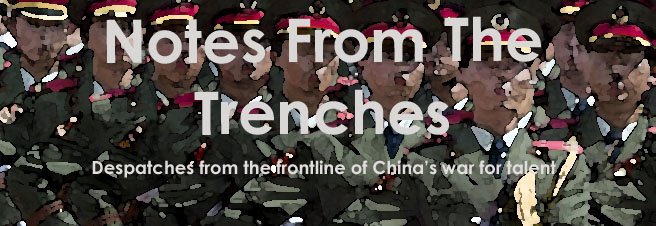The football ‘industry’ in England is one of the most fiercely competitive spheres in the world. I am not just referring to what happens on the field here. Teams like Manchester United, Liverpool and Chelsea are not just fantastic teams; they are also massive businesses, competing for customers and advertising revenue as well as trophies. Another thing they also compete for is talent.
So, how is this relevant to you and to HR? Good question. The comparison I intend to make is simple. The world of football is ultra-competitive and the stakes are unbelievably high. As we all know, competition within the Chinese job-market is also extremely fierce. And, now, with the onset of the global financial crisis, the stakes are growing by the day. I would now like to give two examples that could relate to the Chinese job-market.
PAULO SOUSA – The benefits of patient hiring
The first example actually comes from my own favorite team, Queens Park Rangers. Before the start of the 2008/2009 season, they had a vacancy for the position of head-coach. The board decided to act quickly - some might say too quickly. They appointed Ian Dowie, an experienced, but limited candidate. The speedy appointment allowed Dowie plenty of time to settle in and to prepare the team for the upcoming season. However after three months in the role, results were poor and were getting worse. So, Mr. Dowie was on his way out of the club. The board then had to appoint a new manager mid-season to improve performances. In such a pressing situation, it would have been easy to make another hasty appointment. This time, though, they were in no rush. And, after much deliberation, they appointed the inexperienced but talented Portuguese coach Paolo Sousa. How did this affect results? It appears the patient approach has worked. After 13 games Mr. Sousa has lost just once.
I know, I know, you are now screaming, and “How is this relevant to me?” In the current economic climate, the stakes are just as high as in the cut-throat footballing world. Therefore, it is important you hire right. A wrong move could cost money your company can ill-afford. Therefore, it is vital to stay calm and do not panic when searching for new hires – use QPR’s second hiring model as an example. Even though a quick hire may guarantee limited disruption in the short-term; a wrong hire will guarantee major disruption in the long-term.
GIANFRANCO ZOLA – Avoiding knee-jerk reactions
My second footballing example takes in West Ham United. After their experienced manager decided to quit, they opted to replace him with a young up and coming Italian coach, Gianfranco Zola. Lacking experience and facing an uphill challenge, Zola initially struggled and results were poor. The board quickly fell under pressure from fans to remove Zola and speculation in the media grew quickly. However, they decided to stick by their man. Three months in and Zola began to find his feet, results improved and the pressure abated. In fact, at present, were he to leave the club it would be for bigger and better things.
This example can also translate into Chinese HR terms. Currently, not only is finding talent immensely difficult in China but the fiscal climate means that new hires – particularly in senior management positions - no longer have the luxury of a prolonged settling-in period – all that matters is results. It would have been easy for West Ham to see that results were not as good as they had hoped and to have panicked, with Zola being sent packing. However, they stood by their man and have begun to reap the rewards.
THE MORAL TO OUR STORIES
These two examples teach us two important lessons in regards to recruitment: (i) It is – now more than ever – vital for any organization to ensure they are clear and thorough in their recruitment process. They need to take their time to find the right person. Hiring fast does not mean hiring right. (ii) Once that person is in place, the organization needs to show patience. Chopping and changing personnel is only likely to chaos upheaval and poor results. If an organization has the right person in the right role, it needs to give them time to shine.



